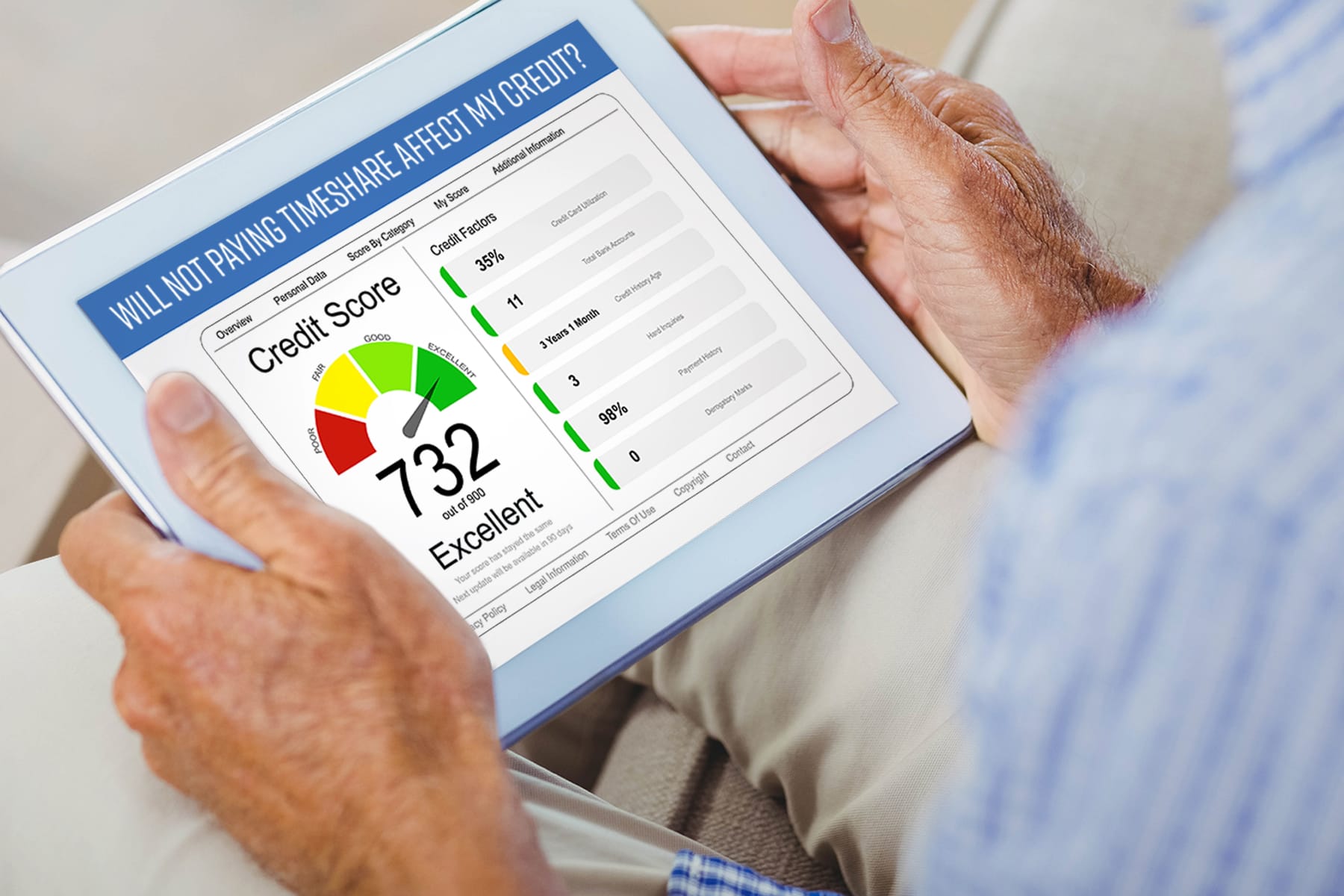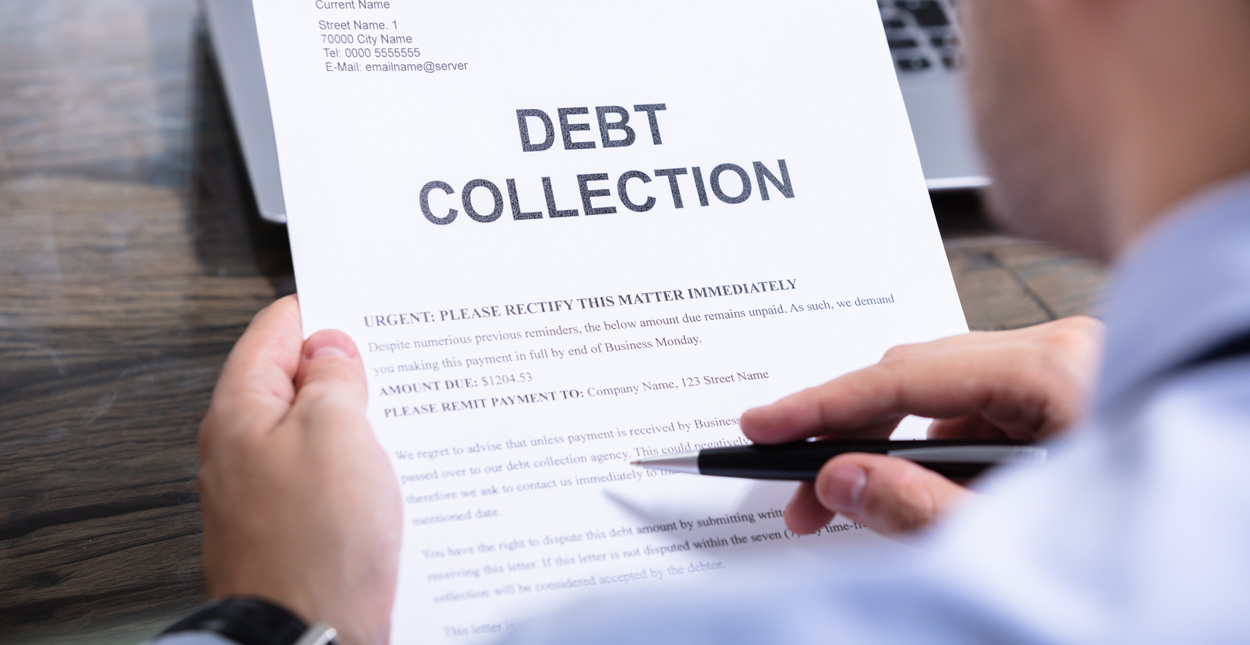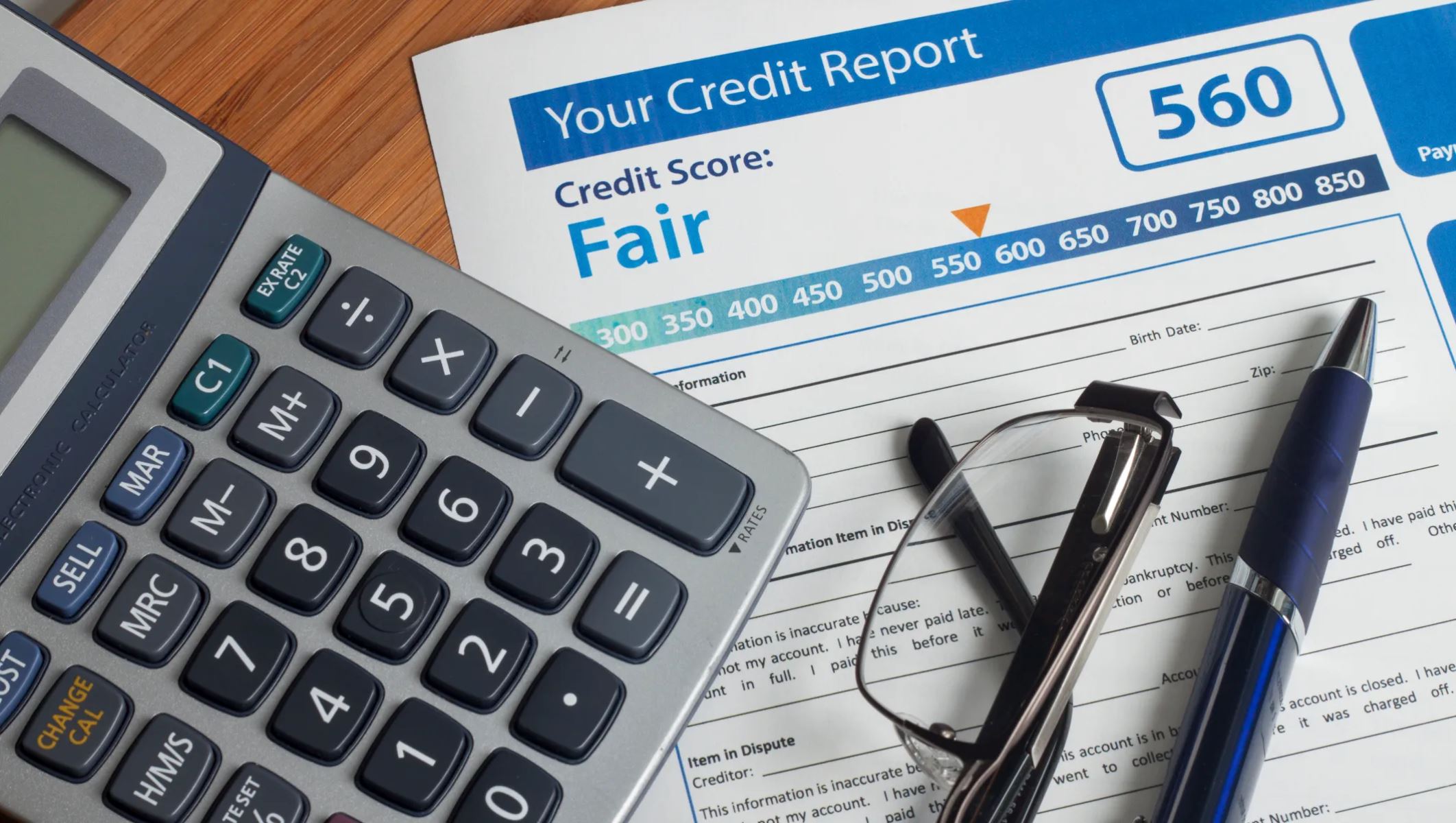Home>Finance>How To Remove Public Records From Credit Report


Finance
How To Remove Public Records From Credit Report
Modified: March 1, 2024
Want to improve your credit score? Learn how to remove public records from your credit report and take control of your finances.
(Many of the links in this article redirect to a specific reviewed product. Your purchase of these products through affiliate links helps to generate commission for LiveWell, at no extra cost. Learn more)
Table of Contents
- Introduction
- Understanding Public Records on Credit Reports
- The Impact of Public Records on Credit Scores
- The Importance of Removing Public Records from Credit Reports
- Steps to Remove Public Records from Credit Report
- Verify the Accuracy of the Public Records
- Request a Copy of Your Credit Report
- Review the Public Records Section
- Dispute Inaccurate or Outdated Public Records
- Follow Up with Credit Bureaus and Creditors
- Seek Legal Assistance if Necessary
- Preventing Public Records from Appearing on Credit Reports
- Conclusion
Introduction
Having a good credit score is essential for financial stability and achieving your goals, whether it’s buying a home, starting a business, or securing a low-interest loan. However, sometimes unexpected events can lead to public records appearing on your credit report, which can severely impact your credit score.
Public records on credit reports can include bankruptcies, tax liens, judgments, and other legal actions. These records serve as red flags to potential lenders and can result in higher interest rates, difficulty obtaining credit, and even denial of credit applications.
Fortunately, it is possible to remove these public records from your credit report, improving your creditworthiness and opening up a world of financial opportunities. In this article, we will explore the impact of public records on credit scores, the importance of removing them from your credit report, and the steps you can take to do so.
By following these steps and taking decisive action, you can regain control over your credit history and improve your financial standing. So, let’s dive in and learn how to remove public records from your credit report.
Understanding Public Records on Credit Reports
Public records on credit reports are legal records of financial activities that can impact your creditworthiness. These records are typically maintained by government entities or courts and are made available to credit bureaus for inclusion in your credit report. The most common types of public records that appear on credit reports include bankruptcies, tax liens, civil judgments, and foreclosures.
Bankruptcy: Bankruptcy is a legal process that allows individuals or businesses to seek relief from their debts when they are unable to pay them. There are different types of bankruptcy, such as Chapter 7 and Chapter 13, each with its own implications on your credit report.
Tax Liens: A tax lien is a claim by the government on your property or assets due to unpaid taxes. If you have outstanding tax debt, the government can file a lien against you, which will appear on your credit report and negatively impact your credit score.
Civil Judgments: Civil judgments are court orders that require an individual to pay a certain amount of money to resolve a legal dispute. If a judgment is made against you, it can be recorded as a public record and affect your creditworthiness.
Foreclosures: A foreclosure occurs when a homeowner defaults on their mortgage payments, and the lender takes possession of the property. This public record can significantly damage your credit score and make it challenging to obtain future loans.
It’s important to note that public records can remain on your credit report for several years, depending on the type of record. Bankruptcies, for example, can stay on your report for up to 10 years, while tax liens can persist for up to 7 years.
Understanding public records and their implications on your credit report is essential to assess the impact they may have on your financial well-being. It also highlights the importance of taking steps to remove these records if they are inaccurate or outdated.
The Impact of Public Records on Credit Scores
Public records on credit reports can have a significant and detrimental impact on your credit score. These records serve as indicators to lenders and creditors of potential financial risks or irresponsibility. As a result, having public records on your credit report can lead to higher interest rates, limited access to credit, and difficulty securing loans or obtaining favorable terms.
Here are some ways in which public records can affect your credit score:
- Negative Impact on Credit Score: Public records, such as bankruptcies, tax liens, and judgments, have a substantial impact on your credit score. These records indicate financial instability and a high level of risk, causing your credit score to drop significantly.
- Reduced Creditworthiness: Public records signal to lenders that you may have difficulty managing your financial obligations. This can result in a lower creditworthiness assessment from lenders, making it harder for you to obtain credit or secure favorable terms.
- Higher Interest Rates: If you manage to secure credit with public records on your report, lenders may view you as a high-risk borrower. As a result, they may offer you credit at higher interest rates to compensate for the increased risk, leading to higher borrowing costs over time.
- Limited Access to Credit: Financial institutions and creditors may be hesitant to extend credit or loans to individuals with public records on their credit report. This limited access to credit can hinder your ability to make important purchases, such as buying a car or a home.
- Difficulty Renting or Employment: Public records are not limited to credit reports. They can also be accessed by potential landlords and employers during background checks. Negative public records may affect your chances of renting an apartment or securing employment.
Given the far-reaching consequences of public records on credit scores, it is crucial to take action to remove inaccurate or outdated public records from your credit report. By doing so, you can improve your creditworthiness and pave the way for a brighter financial future.
The Importance of Removing Public Records from Credit Reports
Removing public records from your credit report is an essential step towards repairing your credit and improving your financial standing. Here are some key reasons why removing public records is crucial:
- Improving Creditworthiness: Public records have a negative impact on your credit score and creditworthiness. By removing these records, you can increase your creditworthiness and make yourself more attractive to lenders and creditors. This can result in better loan terms, lower interest rates, and increased access to credit.
- Enhancing Financial Opportunities: Public records can limit your financial opportunities. With public records on your credit report, lenders may be hesitant to offer you credit, making it difficult to obtain loans for important life milestones, such as buying a car or a home. Removing these records can open up a world of new opportunities and allow you to achieve your financial goals.
- Improved Financial Stability: Having public records on your credit report can create financial instability. It can lead to higher interest rates, making it harder to pay off debts and secure financial stability. By removing these records, you can regain control of your finances and work towards a more stable and secure financial future.
- Prevent Negative Impressions: Public records appearing on your credit report can create negative impressions on potential landlords, employers, or even insurance companies. Removing these records can help you present a more favorable financial profile and increase your chances of securing housing, employment, or favorable insurance rates.
- Protecting Your Privacy: Public records contain personal and sensitive information. Removing them from your credit report helps protect your privacy and reduces the chances of your personal information being accessed by unauthorized individuals.
Overall, removing public records from your credit report is essential for improving your creditworthiness, expanding financial opportunities, and achieving greater financial stability. It is a step towards taking control of your financial future and creating a solid foundation for your financial well-being.
Steps to Remove Public Records from Credit Report
If you have public records on your credit report that are inaccurate, outdated, or no longer applicable, taking the necessary steps to remove them is crucial. Here is a step-by-step guide on how to remove public records from your credit report:
- Verify the Accuracy of the Public Records: Start by verifying the accuracy of the public records on your credit report. Make sure that the information is correct and up to date. If you find any errors or discrepancies, this will be the foundation for disputing the records.
- Request a Copy of Your Credit Report: Obtain a copy of your credit report from each of the three major credit bureaus – Equifax, Experian, and TransUnion. You are entitled to a free copy of your credit report annually, which you can request from AnnualCreditReport.com.
- Review the Public Records Section: Carefully review the public records section of your credit report. Take note of any inaccuracies, outdated records, or records that no longer apply to your financial situation.
- Dispute Inaccurate or Outdated Public Records: If you find any inaccurate or outdated public records, you have the right to dispute them. Write a detailed letter to the credit bureau, clearly explaining why the record is incorrect and providing any supporting documentation. Send this letter via certified mail with a return receipt to ensure it is received.
- Follow Up with Credit Bureaus and Creditors: After disputing the public records, follow up with the credit bureaus and the creditors involved. They have a timeframe to investigate the dispute and make any necessary corrections. Be persistent in ensuring the removal of inaccurate or outdated records.
- Seek Legal Assistance if Necessary: If your attempts to remove the public records are unsuccessful, or if you believe your rights have been violated, consider consulting with a consumer law attorney who specializes in credit reporting. They can provide expert guidance and help navigate the legal process, if needed.
Remember, the process of removing public records from your credit report may take time and patience. It is important to monitor your credit report regularly and take action as soon as you notice any inaccuracies or outdated records.
By following these steps, you can take control of your credit report and work towards improving your credit score and financial outlook.
Verify the Accuracy of the Public Records
The first step in removing public records from your credit report is to verify the accuracy of the records. It is crucial to ensure that the information being reported is correct, up to date, and relevant to your financial history.
Here are some actions you can take to verify the accuracy of the public records:
- Review Your Credit Report: Obtain a copy of your credit report from each of the major credit bureaus – Equifax, Experian, and TransUnion. Carefully go through the public records section of the report to identify any discrepancies or errors.
- Check Personal Information: Verify that your personal information, such as your name, address, and social security number, is accurately reflected on the credit report. Any errors in this information could indicate a larger issue and should be addressed promptly.
- Compare with Your Financial Records: Cross-reference the public records on your credit report with your financial records, such as tax documents, bankruptcy filings, or court orders. Ensure that the information reported matches the records you have on file.
- Request Documentation: If you come across a public record that you are unsure about or believe to be inaccurate, request documentation from the source of the record. For example, if you have a tax lien on your credit report, contact the tax authority to obtain supporting documentation.
- Validate Dates and Amounts: Pay close attention to the dates and amounts associated with the public records. Check for any discrepancies, such as incorrect filing dates or inaccurate debt amounts. These discrepancies can help support your case when disputing the records.
If you discover any inaccuracies or discrepancies in the public records on your credit report, it is essential to take action to correct them. The accuracy of the reported information is vital to maintain the integrity of your credit report and ensure that you are not unfairly penalized with a lower credit score.
Once you have verified the accuracy of the public records, you can move on to the next steps in the process of removing them from your credit report.
Request a Copy of Your Credit Report
Obtaining a copy of your credit report is an essential step in the process of removing public records. By reviewing your credit report, you can gain valuable insights into the status of your credit and identify any public records that may be impacting your credit score.
Here’s how to request a copy of your credit report:
- Visit AnnualCreditReport.com: AnnualCreditReport.com is the official website mandated by the government where you can request a free copy of your credit report from each of the three major credit bureaus—Equifax, Experian, and TransUnion. This service allows you to access your credit reports once every 12 months.
- Select Your State and Credit Bureau: On the AnnualCreditReport.com homepage, select your state and the credit bureau from which you wish to obtain your credit report. You can choose to request reports from one, two, or all three bureaus at once, depending on your preference.
- Verify Your Identity: Follow the instructions provided to verify your identity. This may involve providing personal information such as your name, social security number, and address. The verification process is crucial to ensure that you have authorized access to your credit report.
- Request Your Credit Report: Once your identity is confirmed, you can request your credit report. The credit report will be generated and made available for you to download or print from the website. Be sure to save a copy for your records.
It is important to review your credit report from all three major credit bureaus as the information can vary among them. By obtaining reports from each bureau, you can get a comprehensive view of your credit history and identify any discrepancies or public records that need to be addressed.
Remember to carefully examine the public records section of each credit report to identify any inaccurate, outdated, or irrelevant information. These records are crucial to address as they can have a significant impact on your credit score and ability to secure credit.
Once you have requested and obtained your credit reports, you can proceed to the next step of reviewing the public records section in detail.
Review the Public Records Section
After obtaining a copy of your credit report, it’s important to thoroughly review the public records section. This section will provide detailed information about any public records that may be affecting your credit score and overall creditworthiness.
Here are the key steps to review the public records section of your credit report:
- Identify Public Records: Look for a specific section in your credit report that is labeled as “Public Records” or something similar. This section will list any bankruptcies, tax liens, judgments, foreclosures, or other legal records associated with your credit history.
- Check for Accuracy: Carefully review each public record entry and verify its accuracy. Pay attention to the details, such as names, dates, and amounts. Ensure that the information reported matches your own records and is free from errors or discrepancies.
- Note Outdated Records: Take note of any public records that are outdated and should no longer be appearing on your credit report. Certain public records, such as bankruptcies, have specific time limits on how long they can remain on your report.
- Evaluate Relevance: Assess the relevance of each public record to your current financial situation. Consider whether the record accurately reflects your credit history and financial responsibility. If a public record is unrelated or inaccurate, it may be necessary to take steps to dispute or remove it from your credit report.
- Document Discrepancies: Make a list of any discrepancies or inaccuracies found in the public records section. Note down the specific details, including the credit bureau reporting the information, the type of public record, and any supporting evidence you may have.
Reviewing the public records section of your credit report allows you to identify any inaccuracies, outdated records, or records that may no longer apply to your financial situation. This step is crucial in preparing to take action to dispute and potentially remove the public records from your credit report.
Once you have reviewed the public records section and identified any errors or outdated records, you can proceed to the next step—disputing the inaccurate public records with the credit bureaus.
Dispute Inaccurate or Outdated Public Records
If you have identified any inaccurate or outdated public records during your review, it is crucial to take action and dispute them with the credit bureaus. Disputing the records is a necessary step to have them corrected or removed from your credit report.
Here’s how you can effectively dispute inaccurate or outdated public records:
- Prepare a Detailed Dispute Letter: Write a formal letter to each credit bureau reporting the inaccurate public record. In the letter, clearly explain the nature of the dispute and provide supporting documentation, if available. Be specific about which public record(s) you are disputing and why.
- Include Supporting Evidence: Gather any supporting evidence that strengthens your dispute, such as court documents, bankruptcy discharge papers, or proof of payment. Attach copies of these documents to your dispute letter to substantiate your claim.
- Clearly State the Requested Action: Clearly state in your dispute letter that you are requesting the removal or correction of the inaccurate public record(s). Provide a reasonable timeframe for the credit bureau to complete the investigation and update your credit report accordingly.
- Send the Dispute Letter via Certified Mail: It is essential to send your dispute letter via certified mail with a return receipt requested. This not only ensures that the credit bureau receives your letter but also provides you with proof of delivery and a paper trail for any future correspondence.
- Keep Copies and Maintain Records: Make copies of your dispute letter and all supporting documents for your records. Also, keep track of the dates and details of all communication with the credit bureaus and any responses or updates received regarding your dispute.
It’s important to note that credit bureaus are required by law to investigate the accuracy of disputed information within a specific timeframe, typically 30 to 45 days. During this period, they must contact the creditor or entity that provided the information and request verification of the disputed record.
If the credit bureau determines that the public record is indeed inaccurate or cannot be verified, they must update or remove it from your credit report. Once the public record is corrected or removed, your credit score may improve, and you’ll have a more accurate representation of your creditworthiness.
Be prepared to follow up with the credit bureau to ensure that the dispute is resolved in a timely manner. If the credit bureau fails to take appropriate action or continues to report the inaccurate public record, you can escalate your complaint by filing a complaint with the Consumer Financial Protection Bureau (CFPB) or seeking legal representation.
By disputing inaccurate or outdated public records, you are actively working towards a cleaner and more accurate credit report, which can positively impact your creditworthiness and financial opportunities.
Follow Up with Credit Bureaus and Creditors
After you have submitted your dispute letter to the credit bureaus, it’s important to follow up to ensure that your concerns are being addressed. Additionally, you may need to engage with the creditors involved to rectify any inaccuracies or resolve the disputed public records.
Here are some key steps to follow up effectively with the credit bureaus and creditors:
- Keep Track of Important Dates: Note the date when you sent your dispute letter to the credit bureaus. Keep a record of the date you should expect a response or resolution, which is typically within 30 to 45 days after receipt of your letter.
- Monitor Your Credit Report: Continue to monitor your credit report during the investigation process. Check for any updates or changes to the disputed public records as well as the overall accuracy of your credit report. You can do this by obtaining updated copies of your credit report from each credit bureau.
- Review Correspondence from Credit Bureaus: If the credit bureaus require additional information from you or provide a response to your dispute, review their correspondence carefully. Follow any instructions provided and provide any requested documentation promptly to support your case.
- Follow Up with Creditors: Contact the creditors directly to address any inaccuracies or discrepancies related to the disputed public records. Provide them with the necessary documentation and information to support your dispute. Request that they cooperate with the credit bureaus to update or remove the incorrect records.
- Maintain Communication: Stay in touch with both the credit bureaus and creditors throughout the dispute resolution process. Be persistent in seeking updates and resolution of the dispute. Keep a record of all communication, including dates, times, names, and details discussed.
- Document Resolution: Once the dispute is resolved, ensure that you receive written confirmation from the credit bureaus and creditors. Request updated credit reports to confirm that the inaccurate public records have been corrected or removed from your credit report.
Following up with the credit bureaus and creditors is vital to ensure that the dispute process is progressing and that any inaccuracies or outdated public records are being properly addressed. Persistence and thoroughness are essential in pursuing a resolution that aligns with your desired outcome.
If you encounter challenges or delays in the follow-up process, consider escalating your concerns by filing a complaint with the Consumer Financial Protection Bureau (CFPB) or seeking legal advice from a consumer law attorney who specializes in credit reporting and dispute resolution.
By actively engaging with the credit bureaus and creditors, you increase your chances of achieving a satisfactory resolution and having accurate and updated information on your credit report.
Seek Legal Assistance if Necessary
If your attempts to remove inaccurate or outdated public records from your credit report are unsuccessful or if you believe your rights have been violated during the dispute process, it may be necessary to seek legal assistance. A consumer law attorney specializing in credit reporting can provide expert guidance and representation to help resolve the situation.
Here are some reasons why you may want to consider seeking legal assistance:
- Complex Legal Issues: Disputing public records can involve complex legalities, especially if the matter requires navigating bankruptcy laws, tax regulations, or other intricate legal frameworks. An attorney with experience in credit reporting and consumer rights can provide valuable insights and guidance on how to navigate these complexities.
- Unresponsive Credit Bureaus or Creditors: If the credit bureaus or creditors fail to take appropriate action to address your dispute or if they continue to report inaccurate information despite your efforts, a consumer law attorney can help escalate your concerns and negotiate on your behalf.
- Violations of Consumer Protection Laws: If you believe that your rights have been violated during the dispute process, such as receiving misleading information or being subject to unfair practices, a consumer law attorney can evaluate your case and determine if any violations of consumer protection laws have occurred.
- Legal Strategies and Representation: A consumer law attorney can develop legal strategies tailored to your specific situation, represent your interests in communication with credit bureaus and creditors, and even take legal action if necessary. They have the expertise and knowledge to navigate the legal system effectively on your behalf.
- Maximize Compensation for Damages: If you have experienced significant financial harm or suffered damages due to inaccurate or outdated public records on your credit report, a consumer law attorney can pursue compensation on your behalf and help you recover any losses you may have incurred.
When seeking legal assistance, look for an attorney who specializes in consumer law, credit reporting, and dispute resolution. They should have a track record of successfully handling cases similar to yours and be well-versed in relevant laws and regulations.
Remember to gather all relevant documentation and records related to your dispute before consulting with an attorney. This will help them evaluate your case accurately and provide you with the best possible legal advice and representation.
Keep in mind that legal assistance is not always necessary, but it can be beneficial in complex or contentious situations. Consulting with an attorney will help you determine the appropriate course of action to resolve your credit report disputes effectively.
Preventing Public Records from Appearing on Credit Reports
While it is important to know how to remove public records from your credit report, it is equally vital to take proactive steps to prevent them from appearing in the first place. By practicing good financial habits and staying on top of your obligations, you can reduce the likelihood of public records negatively impacting your credit. Here are some preventive measures to consider:
- Manage your Finances Responsibly: Pay your bills on time, keep your debt levels low, and avoid maxing out your credit cards. By responsibly managing your finances, you can reduce the risk of falling into financial hardship and potential public record situations.
- Create an Emergency Fund: Establish an emergency fund to cover unexpected expenses. Having a financial safety net can help prevent situations where you may struggle to make payments and potentially end up with a public record on your credit report.
- Stay Informed about Tax Obligations: Be diligent in your tax responsibilities and pay your taxes on time. This includes filing accurate annual tax returns and promptly addressing any outstanding tax obligations. By staying informed and fulfilling your tax responsibilities, you can avoid tax liens and related public records.
- Seek Professional Financial Advice: Consult with a financial advisor or credit counselor to get personalized guidance on maintaining a healthy financial lifestyle and managing your credit effectively. They can help you develop strategies to prevent financial difficulties and public records on your credit report.
- Regularly Review Your Credit Report: Stay vigilant by regularly reviewing your credit report from each of the major credit bureaus. Monitoring your credit report allows you to identify and address any potential errors, inaccuracies, or signs of identity theft that could lead to public records appearing on your report.
- Address Issues Promptly: If you encounter financial challenges or face potential legal actions, address them promptly and proactively. Communicate with creditors, seek assistance if needed, and work towards resolving the issues before they escalate to the point of becoming public records.
- Seek Legal Advice when Necessary: If you find yourself in complex legal situations, such as facing potential bankruptcy or dealing with tax issues, consult with an attorney specializing in the respective area of law. They can provide expert guidance to help you navigate the complexities and make informed decisions to minimize the impact on your credit.
By adopting these preventive measures and maintaining responsible financial habits, you can reduce the chances of public records appearing on your credit report. Prevention is key to maintaining a positive credit history and avoiding the potential negative consequences associated with public records.
Remember, building and protecting your credit is an ongoing process. Stay proactive, stay informed, and take the necessary steps to maintain a healthy credit profile.
Conclusion
Removing public records from your credit report is a fundamental step towards improving your creditworthiness and achieving your financial goals. Public records such as bankruptcies, tax liens, judgments, and foreclosures can have a significant impact on your credit score, making it challenging to secure credit, obtain favorable loan terms, rent an apartment, or even secure employment.
In this article, we’ve explored the importance of removing public records from your credit report and outlined a step-by-step process to help you successfully remove inaccurate or outdated records. We discussed the need to verify the accuracy of the public records, request a copy of your credit report, review the public records section in detail, and dispute any discrepancies found with the credit bureaus. We also highlighted the importance of following up with the credit bureaus and creditors and seeking legal assistance if necessary.
Additionally, we discussed preventive measures to minimize the likelihood of public records appearing on your credit report in the first place. By managing your finances responsibly, creating an emergency fund, staying informed about tax obligations, seeking professional financial advice, regularly reviewing your credit report, and addressing issues promptly, you can reduce the risk of encountering public records that can harm your creditworthiness.
Remember, taking control of your credit report is a process that requires diligence, patience, and persistence. By removing inaccurate or outdated public records, you can improve your credit score, open up new financial opportunities, and ultimately achieve greater financial stability and success.
Keep in mind that maintaining a healthy credit profile is an ongoing endeavor. Stay proactive in managing your financial obligations, continuously review your credit report, and promptly address any issues that arise. With smart financial practices and proactive credit management, you can build a solid credit history and pave the way for a brighter financial future.














